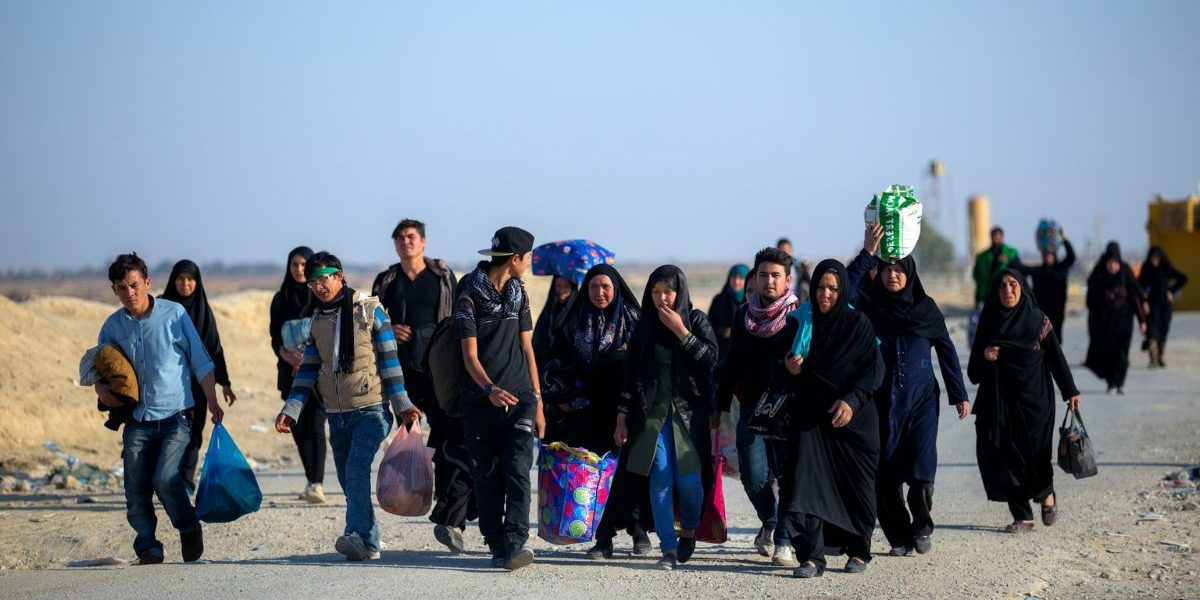Every refugee story begins with a reason to leave. War, persecution, violence, and fear push families to abandon everything familiar. For many, staying is no longer a choice. The journey that follows is not just about moving from one place to another—it’s a deep test of endurance, courage, and the human spirit.
For those who’ve never had to flee, it can be hard to understand what life as a refugee really means. These are not just stories of borders crossed or tents set up. They are lives marked by impossible decisions, ongoing uncertainty, and the steady work of rebuilding something from scratch.
The Decision to Flee
Leaving home is hard, especially for refugees who must escape quickly because of danger and fear. They often have little time to pack their things or say goodbye. Some families leave right away, while others wait, hoping the situation improves.
But when their lives are at risk, even young children learn they must keep going. The choice to flee is brave but desperate, and people often don’t know where they’ll end up.
The Journey Itself
Journeys can stretch across countries and oceans. Many refugees travel on foot, by bus, by raft, or hidden in vehicles. Some pass through deserts or cross mountain ranges. Along the way, they face hunger, illness, and uncertainty. Borders are guarded. Camps are full. Smugglers may demand everything they have left.
Children often go without school. Parents worry not just about the next meal, but about being separated from each other. For some, the journey takes weeks. For others, it drags on for years. Each mile adds weariness—but it also adds strength, as families press forward in search of safety.
Waiting in Limbo
Once across a border, safety may feel closer—but the struggle isn’t over. Refugees may end up in camps, shelters, or temporary housing. Many live in legal limbo, waiting on asylum decisions, work permits, or relocation. Some countries are generous. Others are overwhelmed or unwilling.
Bureaucracy becomes a daily reality. Paperwork is a new language to learn. Access to healthcare, jobs, or schooling can be limited. For many, this in-between stage becomes a second life—stuck between the trauma of the past and a future that hasn’t arrived.
And yet, even in these hard spaces, resilience grows. Communities form. Mothers teach children. Neighbors share food. People plant gardens, volunteer in clinics, and start learning new languages. In the slow work of daily life, many refugees begin to reclaim dignity.
Finding a New Home
Resettlement brings relief—but it also brings new challenges. Refugees who reach safe countries must begin again. New rules. New systems. Often a new language. The trauma they carry doesn’t disappear, and adjusting to life in a different culture can feel overwhelming.
Housing may be temporary. Jobs might be far below someone’s skills. Refugee parents worry about raising children in unfamiliar places. Some feel isolated or unwelcome. And yet, many rebuild with quiet determination. They work long hours, attend language classes, support each other, and raise families that thrive.
Their resilience shines through in small victories—passing an exam, opening a small business, helping a neighbor. These are stories of strength, not charity. Refugees aren’t passive recipients of aid; they are builders, doers, and dreamers who bring value to the places they live.
The Role of Host Communities
Communities that receive refugees have a big role to play. Kindness matters. So does access. Welcoming neighbors, fair policies, and local support can ease the road to belonging. When refugees are included in schools, jobs, and public life, everyone benefits.
Refugees often bring new perspectives, skills, and ideas. They contribute to economies, build cultural bridges, and show remarkable work ethic. But they can only thrive when given the chance to do so. That requires not just tolerance, but true inclusion.
Policies matter too. Delays in asylum processing, language barriers, or limits on employment make it harder for refugees to succeed. Host countries that invest in integration—from healthcare to education to social programs—see better outcomes for both refugees and the broader society.
Stories That Should Be Heard
Media often focuses on numbers—how many people cross a border, how many are admitted, how many are waiting. But behind every number is a name, a face, a story. Refugees are not statistics. They are survivors. They are parents, students, teachers, engineers, artists, and leaders.
Their journeys are not defined by pity, but by power. Their resilience is not abstract—it is lived every day, in every choice to keep going. And their presence in communities is not a burden—it’s an opportunity for connection, learning, and mutual growth.
Listening to refugee voices—really listening—helps shift the conversation. It reminds us that forced displacement is not about “others,” but about us all. War, disaster, and oppression don’t check passports. And the values of safety, family, and dignity are shared across borders.
Moving Forward Together
As the global refugee population continues to grow, so does our shared responsibility. Governments, organizations, and communities all have roles to play. Compassion is not a weakness. Inclusion is not a luxury. And resilience, when supported, becomes strength for all.
Welcoming refugees isn’t just about providing shelter. It’s about recognizing their humanity, hearing their stories, and making space for their future. Every journey that ends in safety is also the start of something new—not just for the person who arrives, but for the place that receives them.
Final Thought
Refugee journeys tell us something about loss, but even more about hope. They challenge us to build systems rooted in fairness and hearts ready to welcome. And in doing so, they show what’s possible—when resilience meets opportunity.
